VP Aviation is discounting discussion on forums and comments that its proposed unleaded fuel won’t be suitable for big displacement engines, particularly radials. VP Aviation’s fuel, which is being developed in partnership with Lyondell/Basell, is the last one going through the FAA’s Piston Aviation Fuel Initiative (PAFI) which, if successful, will lead to a “fleet authorization” permitting its use in all gasoline-powered engines.
In a detailed explanation issued to AVweb (copied in full below) VP Aviation Director of Research and Development Mark Ward said his company’s UL100E hasn’t been fully tested on radial engines so “there is no evidence to support the claim that UL100E, or any other 100-octane unleaded fuel, has insufficient detonation resistance to safely operate in these engines and aircraft.” He also said testing in “a Continental TSIO-520-VB, TSIO-550-K, and Lycoming’s TIO-540-J2BD show that UL100E has similar detonation resistance to 100-octane 100LL under most conditions tested.” He did not say under what circumstances its detonation resistance differed from 100LL.
Ward reiterated a theme coming out of the PAFI process that VP Aviation’s fuel might not be a completely universal drop-in replacement for 100LL. “Since several engines were developed when 100/130 leaded fuel was available, it is possible that a small number of these engines in the GA fleet will need either mechanical modifications to accommodate any unleaded fuel or changes in the aircraft POHs to stay within safe operating conditions,” he said.
Ward stressed that the comprehensive nature of the FAA/PAFI process is designed to ferret out those discrepancies and suggested the STC process completed by General Aviation Modifications Inc. (GAMI) and Swift Fuels is less thorough. “The comprehensive FAA PAFI testing program is designed to proactively define these limitations and implement the required modifications and communicate this to general aviation community,” Ward said. “The fuel producer-designed and executed STC testing programs offer no such assurances.”







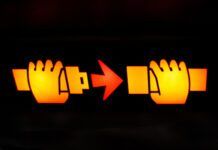








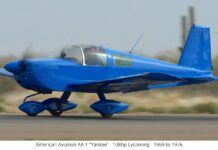






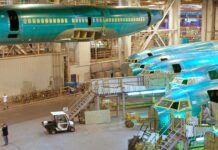

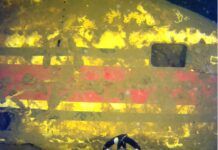

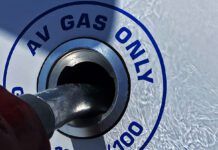






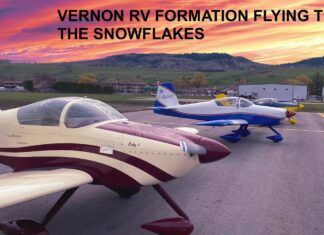
Despite all the drama – and possibly some corruption – I believe the ASTM process is the way to go. The STC process is cumbersome to implement and use. ASTM will provide a true universal fuel standard.
ASTM has nothing to do with a true drop-in 100LL replacement. The fuel still needs to be blessed by the FAA, which of course they will give to their preferred big-money fuel if it runs in a majority of engines.
Seems the ASTM process might offer some bureaucrat career risk mitigation, but I think you are mostly correct. Big government likes dealing with big business. It’s a natural thing, and it has not been good for our unique country.
+1 James L.
Don’t place too much faith on ASTM assuming it will be the magic pill for an unleaded fuel. It is unfortunate that the system favors large companies with deep pockets over a small organization that appears to have already found a workable solution. An ASTM spec does not dictate the exact recipe for the fuel, but a range of tolerances for the different components. The ASTM “standard” for 100LL provides a range of percentages for various materials. As a result, Shell 100LL is not the same as Chevron 100LL. They just fall within the acceptable range to perform as desired and does not cause harm to fuel systems. It is possible, even likely, that a similar spec for 100UL will allow several different formulations. No easy solution.
Risk management legal beagles and lawyers for the FBO’s and Suppliers will relegate Braly Brew G100UL STC’d only/ non ASTM — to a ” non entity ” via the alphabet soups of PAFI / FAA..
VP Aviation’s bullet points for radial engine testing erroneously associate the R-1340 with the Stearman and the W670 with the AT-6. In reality, the engines are installed on the opposite airframes.
I hope their engineers paying more attention to the details of testing than their marketing department is to public announcements.
A Cylinder is a Cylinder; the configuration on the crankcase doesn’t affect what happens inside!
Radials are generally older engines with low octane requirements.
One comment mentions the R1340; early versions used the available 67 octane fuel; the later ones were built for 91 octane fuel.
The early Continental 670’s were built for 65 octane; the later ones for 80 octane.
These engines are not likely to have issues with a 100 octane fuel.
Those who comment that the unleaded fuels may not resist detonation in these radials clearly do not understand the question!
Nobody will be running an R2800 on 100 octane as if it was 115/145; they figured that out when 100 octane became the only choice; the answers are already in place.
I fly several aircraft with various engines; all of them will be happier on unleaded than on 100 “LL”.
One of those engines is utterly allergic to lead; lead is not good for engines or people;
Get over it!
It is funny, if not down right sad, that others are trying to copy what GAMI Already did with there G100UL.
Are we going to have to wait until all these well connected government friends give up before we can get to use G100UL?
Maybe we need some people in the White House, and head of the FAA, who are not part of the establishment?
Not sure why the big oil companies,Exxon,Shell,PetroChina,Chevron,etc don’t seem to have gotten involved in the issue for fuel for the big pistons.Fuel seems to be their buisness.
So you’ve only just joined the discussion I assume? You’d know that statement was completely un-factual otherwise. They actually know enough after a couple of decades of work that the ‘fix’ is both elusive and important enough to get right, before tossing it recklessly into the marketplace without appropriate and adequate testing IMO.
Big oil doesn’t consider Avgas a “fuel”. It is classified as a speciality chemical because of the low volumes. Cars use more gasoline in one day than the entire piston engine fleet in one year.
I think big oil just could not be bothered with the work required to satisfy the regulatory agency’s demands for something that will generate profits that will be a rounding error on their annual revenue.
Nonsense, David. Pure nonsense!
The major oil companies that make 100LL are content to maintain the status quo for now. EAGLE gives them cover for another six years anyway. Shell did participate in the initial PAFI program, but bailed out when the program produced no viable products. At this point they all seem to be waiting until the final fuel shakes out before committing to produce it. Probably a smart move on their part considering the huge cost to build the units needed. Lyondell/Bassell is a large specialty chemical producer which tells you who is interested in the customized formulation that might be needed for 100UL. Blending a mixture that can resist detonation is only a small part of the overall fuel requirement. Compatibility with aircraft fuel systems and storage, transport and aging issues are equally important. I can whip up a concoction that could resist detonation, but it would eat up your fuel system and go bad in storage within a couple months.
Thanks for pointing out that getting unleaded 100 octane fuel into the global market is about a lot more than detonation. Most first-year college chemistry students could brew a gasoline that wouldn’t detonate in a lab engine in say Oklahoma, but all of the other characteristics make it a whole lot harder to design and validate. Whether it is PAFI or ASTM, someone has to do a great deal of testing and verification before any refiner is going to sign up to produce the fuel. Remember Phillips’ original PAFI formula worked great until folks noticed their manganese additive was more toxic than the lead, and it occasionally dissolved the paint around the fuel fillers?
It was Shell, not P66, who had problems with the paint due to their aromatic amine octane booster. Manganese is not more toxic than lead. It is an essential nutrient. The problem with high levels of manganese is that it fouls spark plugs and other parts of the engine and there is no efficient scavenger for it like there is for lead (ethylene dibromide).
Other than that, you and John Mc are correct. It takes a huge amount of testing to validate a new fuel for a fleet and technology that spans more than 70 years. There are also many variables that must be considered besides octane, cost and availability of key raw materials being another big one.
I am a fan of GAMI, and although I understand their fee for the use of their STC for their 100LL replacement, I doubt that I will ever purchase one. Paying the equivalent of 50-60 gallons of 100LL a the lowest quoted cost or 115 to 140 gallons at the highest quoted cost represents way too many operating hours to support the price. I live in FL and will bet that one of the other replacements becomes available sooner than any local FBOs start selling the GAMI product. I think that George Braley is making a mistake pricing the STC so high. If it was cheap, then pilots would be knocking down the doors of FBOs to start selling it.
The older octane ratings for avgas such as 80/87 and 100/130 were for lean and rich conditions. With 100LL at just one value, there could possibly be some high compression engines out there with a detonation issue when rich for takeoff or go-around. The lead additive is an octane booster.
That’s what testing is for.
Swift’s UL94’s VSR cocktail carried ASTM approval…
I am having a hard time with what is called the ASTM process. the ASTM has published a specification for leaded and unleaded aviation fuels. it is a set of requirement based on performance w validated test methods called out to verify performance of any fuel to that specification requirements.
this is the normal methid of adressing a complex issue.
a set of requirements are developed
a series of verification tests are fereanced to be used to verify performance to the requirement. the tests called out are to have been previously validated to give results that verfiy the adherance to or failure of the requiremnt.
so all a manufacture has to do is make a fuel that they test of have tested to these methids to see if the mfuel is meeting the spec.
the ASTM does MNOT validate a fuel metal, pklastic etc. the maker does.
As for all the hoo ha about the delivery systems needing to be compaitable , that is a separate issue that has to do with those systems NOT the fuel.
In the past pre 100 LL, there were very higly leaded fuels with toluene and benzine as major components. these were supplied to a speciification. these worked well and separate fueling systems were rare used expect that these fuels were very hazardous to human health….far worse than lower octane materials.
so IF Swift or anyone certifiys thier fuel as meeting the ASTM spec it is time to move on. the BS about radial engines not being able to usee UL 110 they will not be able to use 100LL either. small batches of 130 octane are made and can be made by form like VR who make high octane racing fuels.